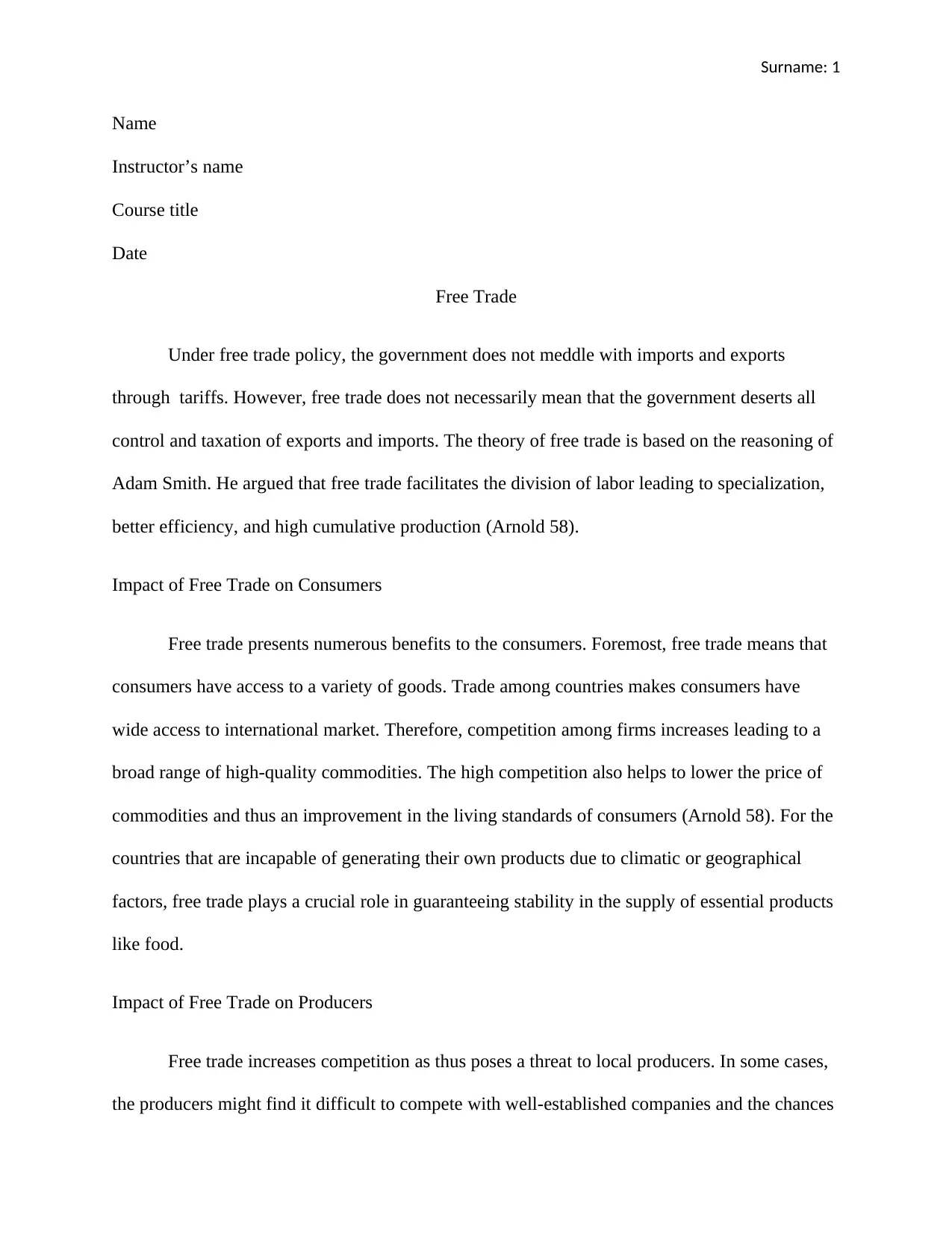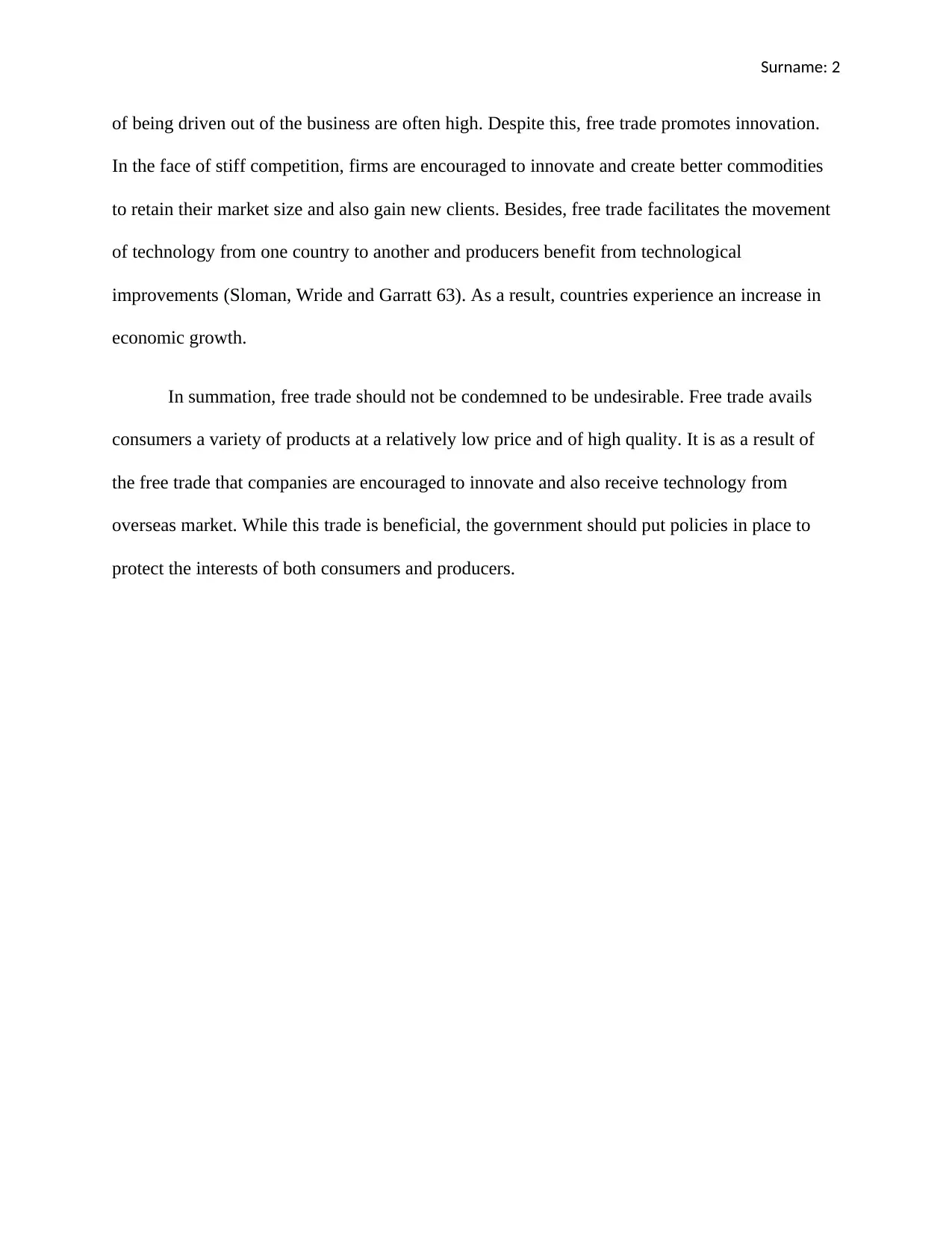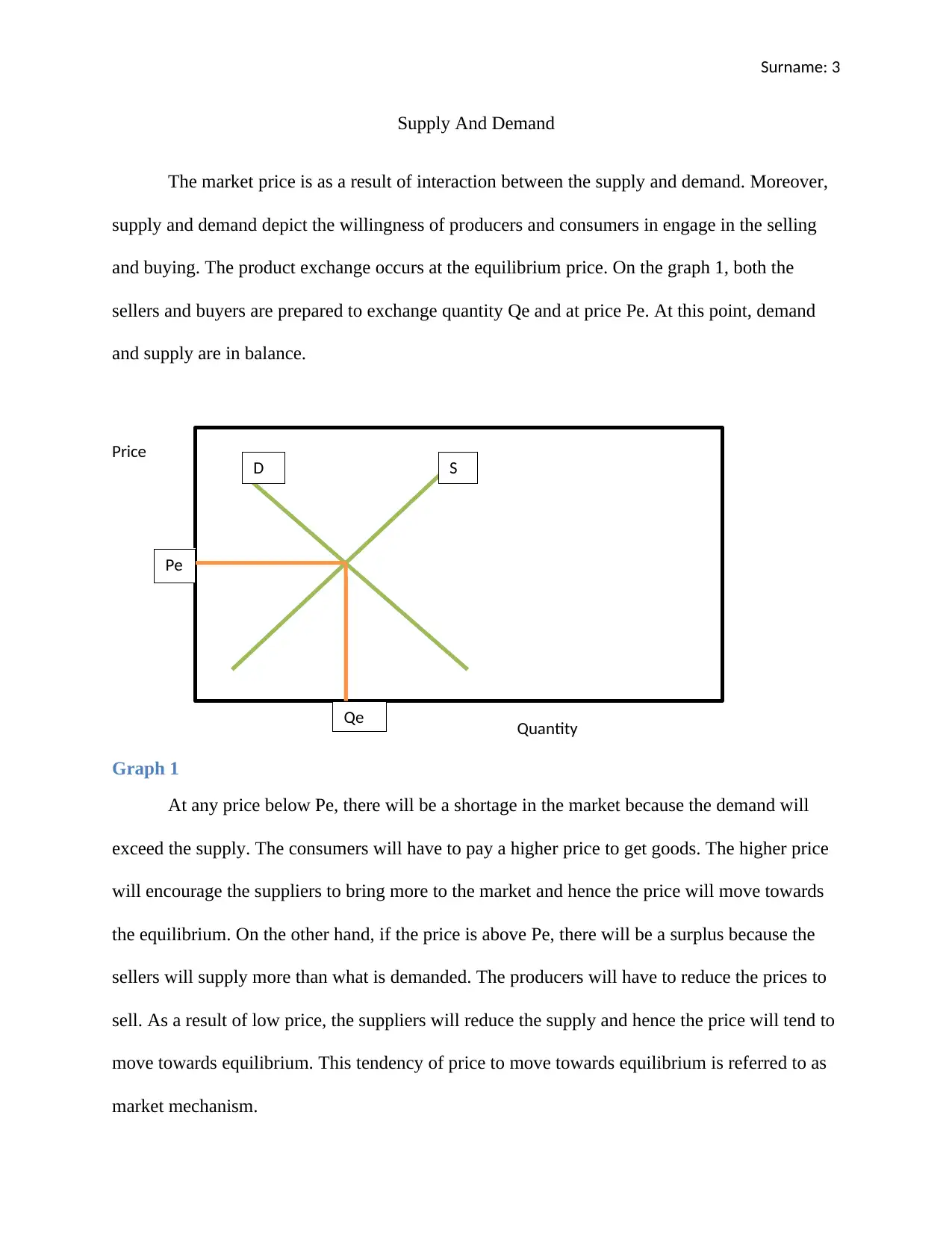Free Trade, Market Equilibrium, and Economic Impact: A Detailed Report
VerifiedAdded on 2021/06/14
|4
|670
|70
Report
AI Summary
This report examines the principles of free trade and its impact on consumers and producers. It highlights the benefits of free trade, such as increased access to goods and services, and the challenges it poses to local producers through increased competition. The report delves into the concept of market equilibrium, explaining how supply and demand interact to determine prices and quantities. It uses a graphical representation to illustrate the equilibrium point and discusses the market mechanism that drives prices towards equilibrium. The report concludes that while free trade offers advantages, governments should implement policies to protect both consumers and producers. The report also references key economic texts to support its arguments.
1 out of 4











![[object Object]](/_next/static/media/star-bottom.7253800d.svg)